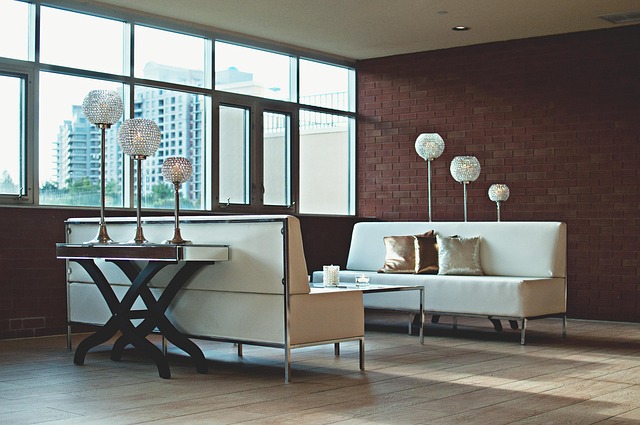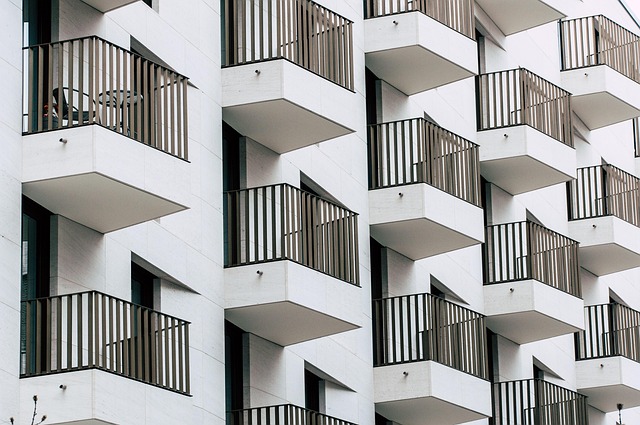Glulam (glue-laminated timber) is revolutionizing construction by offering superior strength, flexibility, and sustainability compared to traditional methods. This innovative material combines multiple layers of wood veneers with powerful adhesives, resulting in complex geometric designs while promoting eco-friendly practices. Glulam structures provide enhanced structural integrity, faster installation, reduced weight, and fire resistance, making them ideal for both commercial and residential projects. With its high strength-to-weight ratio and minimal environmental impact, glulam is a game-changer in sustainable construction, driving industry innovation with visually striking and durable buildings.
“Discover the future of construction with innovative glulam building systems. This cutting-edge technology is revolutionizing the industry, offering unparalleled strength and versatility. From glulam’s structural integrity to its ability to enhance design flexibility and promote sustainability, this article explores why it’s a game-changer. Uncover the advantages, aesthetic potential, and environmental benefits that make glulam a top choice for modern construction. Read on to delve into the world of glulam and explore real-world applications.”
- Understanding Glulam: The Core of Innovative Building Systems
- Advantages of Glulam in Modern Construction
- Design Flexibility and Aesthetics with Glulam Structures
- Sustainable and Environmental Benefits of Glulam Technology
- Case Studies: Successful Implementation of Glulam Buildings
- Future Prospects and Trends in Glulam Building Systems
Understanding Glulam: The Core of Innovative Building Systems
Glulam, or glued laminated timber, is a revolutionary building material that has taken the construction industry by storm. It’s more than just wood; it’s an engineering marvel crafted from multiple layers of wood veneers bonded together with strong adhesives. This innovative technique enhances the strength and stability of natural timber, transforming it into a powerful resource for modern architecture.
The core advantage of glulam lies in its ability to create intricate and large-scale structural elements. From sweeping spans to elegant curves, glulam offers designers and architects an eco-friendly alternative to conventional building materials. Moreover, when compared to traditional methods, glulam provides cost-effective solutions without compromising on strength or aesthetics, making it a sustainable choice for both commercial and residential projects. Its versatility also extends to creating unique architectural forms while promoting environmentally conscious construction practices with the availability of eco-friendly glulam alternatives.
Advantages of Glulam in Modern Construction
Glulam, or glue-laminated timber, is revolutionizing modern construction with its superior structural integrity and aesthetic appeal. Its core advantages lie in the precision manufacturing processes that allow for complex glulam construction techniques. This innovative material is created by gluing together multiple layers of wood laminaates, resulting in strong, straight, and stable components.
Compared to traditional building methods, glulam offers significant benefits, including faster installation times, reduced weight, and enhanced design flexibility. Glulam manufacturing processes enable the creation of intricate shapes and curved structures, opening up a world of possibilities for architects and engineers. Moreover, glulam options for curved structures are particularly advantageous in creating unique designs that were previously challenging to achieve with conventional building materials.
Design Flexibility and Aesthetics with Glulam Structures
Glulam structures offer unparalleled design flexibility, allowing architects and engineers to create unique, curved forms and complex geometric shapes that were once challenging or impossible with traditional building methods. By utilizing laminated wood beams, glulam can span greater distances without support, enabling open-plan interiors and expansive windows that maximize natural light. This versatility translates into endless aesthetic possibilities, from modern, minimalist designs to organic, nature-inspired structures.
Beyond aesthetics, glulam framing presents several advantages for contractors. Its strength-to-weight ratio makes it an eco-friendly alternative to steel or concrete, reducing material transportation costs and minimizing the environmental impact of construction. Glulam’s dimensional stability ensures accurate assembly and long-lasting performance, while its fire resistance provides added safety. Moreover, the ability to pre-fabricate glulam components in a controlled environment streamlines construction, accelerating project timelines and potentially reducing labor costs.
Sustainable and Environmental Benefits of Glulam Technology
Glulam technology offers a compelling solution for achieving sustainable and environmentally friendly construction practices. As a innovative application of glued laminated timber, glulam is a cutting-edge material that prioritises both strength and sustainability. Its production involves careful selection and precise gluing of multiple smaller timber pieces, resulting in structural elements that are remarkably strong and durable while also being renewable and low-impact.
Beyond its contribution to more responsible construction, glulam presents significant advantages for long-term infrastructure health. The material’s resistance to rot, pests, and fire makes it a reliable choice for lasting structures. Moreover, the versatility of glulam allows for complex geometric designs, enabling architects and engineers to create visually striking and energy-efficient buildings that seamlessly integrate with their natural surroundings. Its use in various applications, such as glulam for sustainable infrastructure and glulam applications in bridge building, exemplifies the technology’s potential to transform the industry, driving a movement towards green and resilient construction worldwide.
Case Studies: Successful Implementation of Glulam Buildings
Glulam has found its place in modern wood architecture, with numerous successful implementations across various structures. These case studies highlight the material’s versatility and durability, showcasing how glulam can be tailored to meet the unique design requirements of contemporary buildings. From residential homes to commercial spaces, glulam constructions have demonstrated exceptional performance under extreme conditions.
One notable example involves a glulam bridge that spans a scenic river valley, where advanced manufacturing processes were employed to ensure precision and strength. The bridge’s design considerations for wind load were meticulously addressed, resulting in a stable and visually appealing structure. These real-world applications not only underscore the capabilities of glulam but also drive further innovation within the industry, inspiring architects and engineers to explore new possibilities in wood construction.
Future Prospects and Trends in Glulam Building Systems
The future of glulam building systems appears promising, with continuous innovation and a growing recognition of its benefits. As architects and engineers embrace more complex designs, glulam is set to play a pivotal role in shaping sustainable and aesthetically pleasing structures. The ability to create intricate glulam solutions for complex geometry opens up new possibilities for modern architecture, allowing for unique and bold structural elements that were once challenging to achieve.
Trends indicate a shift towards integrating glulam architectural elements seamlessly into designs, offering both structural integrity and visual appeal. With advancements in manufacturing techniques, glulam options for curved structures are becoming increasingly accessible, further expanding the creative potential of this versatile building system. This evolution promises to bring about more dynamic and innovative glulam applications, ensuring its place as a preferred choice for environmentally conscious construction projects.
Glulam building systems, with their innovative core and diverse advantages, are revolutionizing modern construction. From design flexibility and aesthetic appeal to significant sustainable benefits, glulam technology offers a compelling solution for eco-conscious projects. As demonstrated in successful case studies, these structures not only stand the test of time but also contribute to a greener future. With ongoing advancements and growing popularity, glulam is poised to become an integral part of the construction landscape, shaping the way we build and live.







